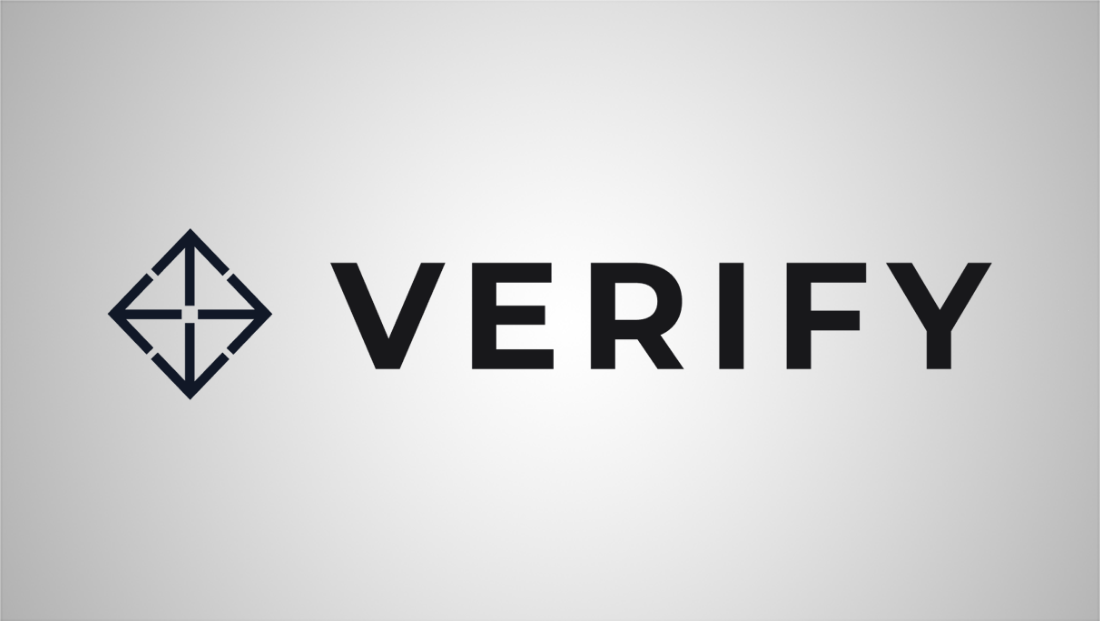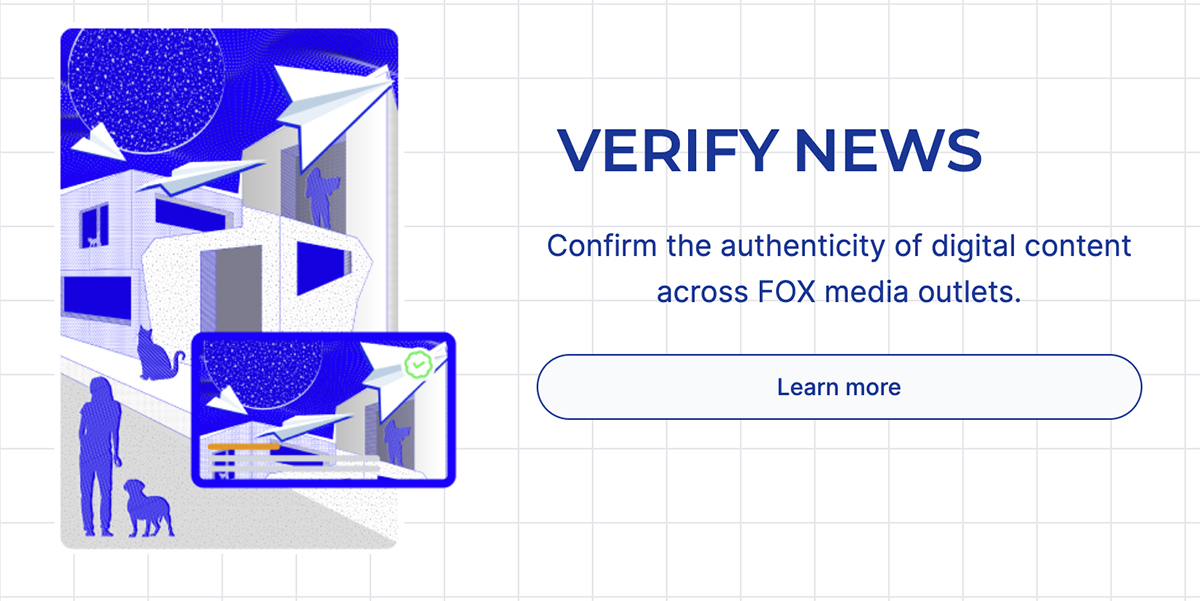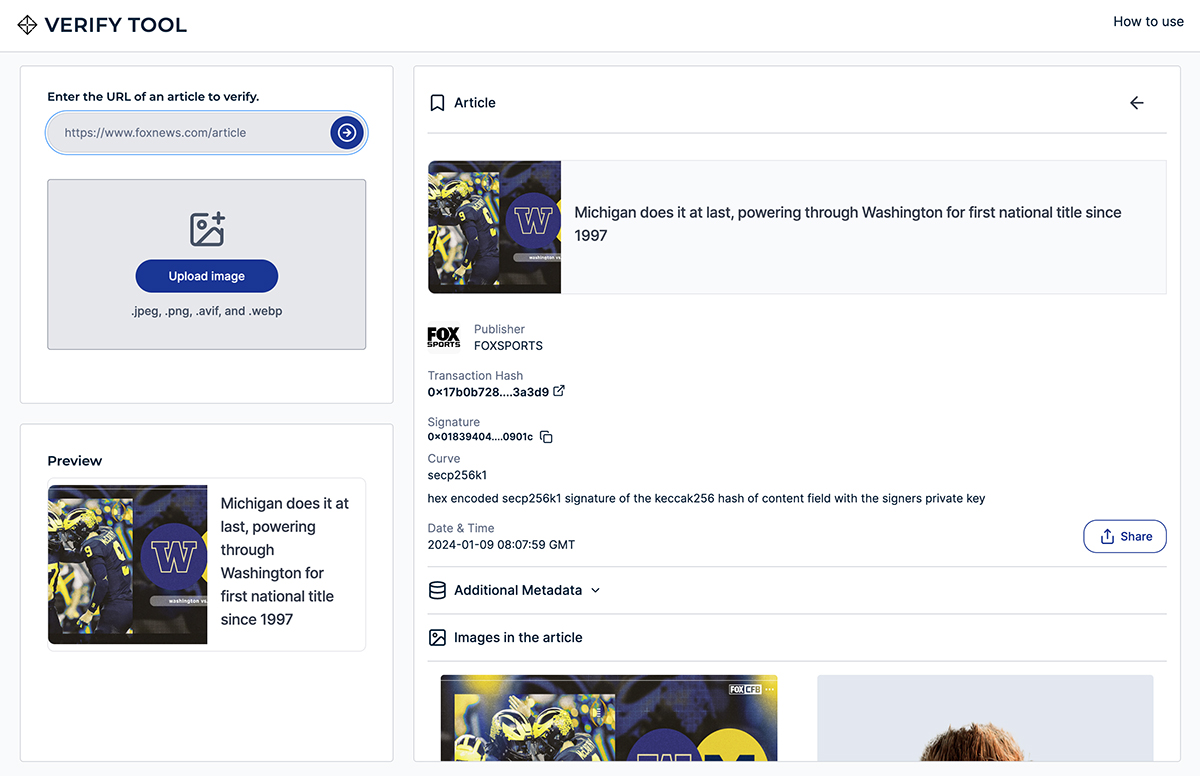Fox launches Verify: Open source protocol to address content authenticity

Subscribe to NewscastStudio for the latest news, project case studies and product announcements in broadcast technology, creative design and engineering delivered to your inbox.
Fox Corp has launched Verify, a new technical protocol designed to address the burgeoning challenges posed by artificial intelligence, especially the use of Large Language Models (LLMs) in content generation.
This initiative has emerged in response to the growing concern over the unauthorized use of media content by AI platforms, a situation that has seen media companies either blocking AI crawlers or resorting to legal actions, such as the recent lawsuit by The New York Times against OpenAI.
Verify is unique in its dual purpose.
It allows media companies to register their content, thereby establishing usage rights for AI platforms, including attribution and potential compensation. This is achieved through a blockchain-based system of ‘smart contracts.’ Simultaneously, Verify provides consumers with a tool to confirm the authenticity of content, particularly images and article links, from recognized sources.
The public release of Verify, along with its first application – the Verify Tool – marks Fox Corp’s commitment to addressing the twin issues of intellectual property infringement and content verification in the digital age. The Verify Tool, a web-based solution, allows users to authenticate the origin of images and articles, ostensibly ensuring their credibility and source accuracy.
Developed by the Fox Technology team in collaboration with Polygon Labs, Verify leverages blockchain technology to sign pieces of content cryptographically and is hosted on GitHub.
This establishes their origin and allows consumers to independently verify said origins. The integration with Fox’s content management system (CMS) indicates the protocol’s potential for seamless adoption in online publishing workflows.
It is important to note the distinction that Verify can only confirm if the content is “authentic” and was published by an entity. It cannot confirm or verify if the content is misinformation, fake, or AI-generated.


There is a bit of irony in the launch of Verify, however, given the litigation surrounding coverage of Dominion Voting Systems by Fox and later defamation lawsuit settlement by the network for $787.5 million. The network is currently facing a second defamation lawsuit from Smartmatic.
In our testing of the Verify Tool, content such as a 2022 midterm election recap and a story about Michigan’s national football title quickly passed verification.

However, Fox’s editorial story noting the settlement between the network and Dominion Voting Systems in April 2023 would not verify. NewscastStudio has contacted Fox Corporation for more details about why one article would verify and another, more recent article on the same CMS platform, would not.
The introduction of the Verify protocol by Fox represents a significant step in addressing the complex challenges posed by AI in the media industry and will surely not be the only solution brought to the table.
Verify could serve as a prototype for the industry’s engagement with emerging technologies by safeguarding intellectual property rights and ensuring content authenticity.
Verify is also the brand name for a fact-checking and anti-misinformation franchise created by Tegna and used by most of its television stations in markets across the country.
Subscribe to NewscastStudio for the latest news, project case studies and product announcements in broadcast technology, creative design and engineering delivered to your inbox.



tags
AI, Artificial intelligence, Fox, Fox News, Polygon Labs
categories
Broadcast Engineering News, Broadcast Industry News, Content Delivery and Storage, Featured